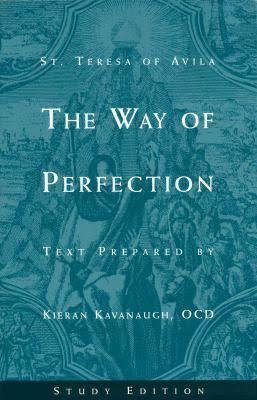8.6 /10 1 Votes
Publication date 16th century Subject Christian mysticism | 4.3/5 Goodreads Originally published 1583 Original title Camino de Perfección Language Spanish | |||||||||||||||||||||||||||||||||
 | ||||||||||||||||||||||||||||||||||
Similar The Interior Castle, Ascent of Mount Carmel, The Story of a Soul, Spiritual Canticle, Dark Night of the Soul | ||||||||||||||||||||||||||||||||||
St teresa of avila the way of perfection 1 of 4
The Way of Perfection (Spanish: Camino de Perfección) is a method for making progress in the contemplative life written by St. Teresa of Ávila, the noted Discalced Carmelite nun for the members of the reformed monastery of the Order she had founded.
Contents
- St teresa of avila the way of perfection 1 of 4
- The way of perfection by saint teresa of avila
- Overview
- References
Teresa was a major figure of the Catholic Reformation in 16th-century Spain, and eventually was named a Doctor of the Church, while her work became a classic text in Christian spirituality and mysticism, especially in the realms of prayer in Christianity and Spanish Renaissance literature.
Teresa called this a "living book" and in it set out to teach her nuns how to progress through prayer and Christian meditation. The first 18 of the 42 chapters discuss the rationale of being a Carmelite, the rest deal with purpose and approaches to spiritual life.
The way of perfection by saint teresa of avila
Overview
The title was inspired by The Imitation of Christ, published in 1418), and had become a favourite expression of Teresa much before she wrote this work as it appeared at several places in her autobiography, The Life of Teresa of Jesus. Like her other books, The Way of Perfection too was written on the advice of her counsellors to describe her experiences in prayer, during the period when the Reformation was spreading through Europe. Herein she describes ways of attaining spiritual perfection through prayer and its four stages, as in meditation, quiet, repose of soul and finally perfect union with God, which she equates with rapture.
Over time, the book meant as spiritual instruction for her nuns offered her views on Christian theology and spiritual direction in a more direct and accessible way than her more famous works, like The Interior Castle and her autobiography.
